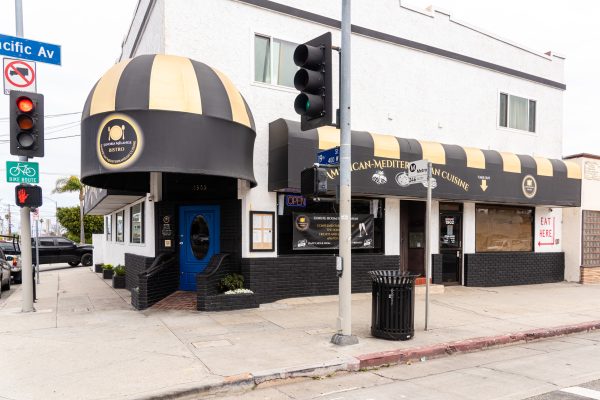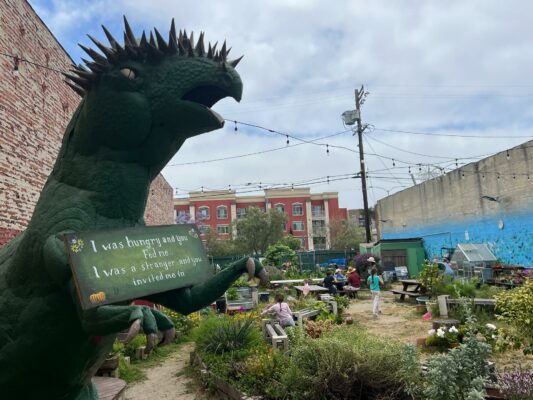by Mark McDermott
The Manhattan Beach City Council on Tuesday night sent proposed new language for plaques at Bruce’s Beach back to the History Advisory Committee, a group of residents tasked with providing a more accurate telling of what occurred when racially-motivated city leaders in the 1920s utilized the power of eminent domain to condemn the property.
A council majority took issue with what they perceived was a telling of the history that went beyond the strictly factual. Mayor Suzanne Hadley praised the Committee’s work on both its Final History Report and the plaque but expressed unease with the manner in which that history was represented on the plaques.
“To me, to me, this is a thumb on the scale,” Hadley said. “It’s more of a story of Bruce’s Beach….I wanted the history of Bruce’s Beach on these plaques. And I’m Joe Friday from Dragnet, ´Just the facts ma’am.’”
The plaques are intended to be completed by year’s end and will be located both near where the resort operated by Willa and Charles Bruce was located, which is now Los Angeles County Lifeguard training headquarters, and within the park itself, which still belongs to Manhattan Beach. The existing plaque at the park tells a whitewashed history, praising one of the City’s founders for allowing Black people to purchase land.
“In 1912, Mr. George Peck, one of our community’s co-founders, made it possible for the beach area below this site to be developed as Bruce’s Beach, the only beach resort in Los Angeles County for all people,” the plaque’s history begins.
In fact, Peck did not sell the land, and shortly after the Bruce’s opened up their lodge had the beach roped off and “No Trespassing” signs erected, requiring Black beachgoers to walk a half mile to reach the beach.
The History Advisory Committee´s efforts have been dogged by anonymous, surprisingly influential group emails from a person or a group calling itself “BruceBeachGetTheFacts.”
Councilperson Steve Napolitano referenced the emails in questioning why the new history included mention of “No Trespassing” signs.
“The point that was made in the email was that since when is it racist to put a ‘No Trespassing’ sign on private property?” Napolitano said.
Kristin Drew Long, one of the report’s and the plaque language’s authors, responded that the racist element came into play in the enforcement.
“It’s not racist to put ‘No Trespassing’ signs on private property, except for the fact that the only people who were told they could not cross over this land to get to the water were the Black visitors to the beach,” she said.
Napolitano said he didn’t question the racist motivations behind the land’s condemnation. which had been established by the Committee. But he did question the inclusion of a reference to Ku Klux Klan activity in the area at the time.
“We don’t have anything showing that the Klan influenced the Board of Trustees,” he said, referencing the body then equivalent to today’s city council. “Is that correct?”
“One thing to also remember is the Klansmen wore hoods, so we couldn’t always tell who they were,” Long said. “And there was a reason for that, right?”
Councilperson Joe Franklin also took issue with reference to the Klan, whose influence on the Board of Trustees he noted was reported as “speculated” at the time. Franklin also admonished the Advisory Committee for not better utilizing another historical source, Josh Side’s book, “LA City Limits: Black Los Angeles from the Great Depression to the Present.” Holding up the book, he read a quote from Jefferson Edmonds, editor of the Liberator, a race paper of the time: “A few years ago, the bulk of our present Colored population came here from the South, without any money, in search of better things, and we are not disappointed,” Edmonds said in 1911. “A hospitable white people received them kindly, employed them at good wages, treated them as men and women, furnished their children with the best educational advantages everywhere, feeling perfectly safe, the color population planted themselves.”
“I’m sure that we can agree that it’s highly likely that a good number, if not the majority of the 600 residents of Manhattan Beach at the time, just 15 miles away, and a Red Car ride from Los Angeles, would have the same hospitable attitude,” Franklin said.
Mayor Pro Tem Hildy Stern said the Committee had utilized Sides’ book, and praised its work generally for providing historical context as well as specifically establishing the racial motivations that lead to condemnation.
“It’s so much easier to be an editor than it is to be a writer,” Stern said.
Council asked the Committee to take the general direction of its comments and return with another draft of language for the plaque within the next few months. ER









